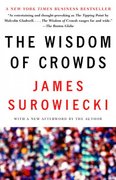Question
Q7. (i) Discuss the three theories of the term structure of interest rates. Include in your discussion the differences in the theories, and the advantages/disadvantages
Q7. (i) Discuss the three theories of the term structure of interest rates. Include in your discussion the differences in the theories, and the advantages/disadvantages of each.
(ii) Discuss the M2 measure of performance by answering the following questions. Why is M2 better than the Sharpe measure? What measure of risk does M2 use? How do you construct a managed portfolio, P, to use in computing the M2 measure? What is the formula for M2 ? Draw a graph that shows how M2 would be measured. Be sure to label the axes and all relevant points.
(iii) Discuss some of the factors that might be included in a multifactor model of security returns in an international application of arbitrage pricing theory (APT).
(iv) Why are many bonds callable? What is the disadvantage to the investor of a callable bond? What does the investor receive in exchange for a bond being callable? How are bond valuation calculations affected if bonds are callable?
(v) Discuss some of the accounting comparability problems involved in international investing.
Q18. 3. (450 points; 25 minutes) In the competitive market for medical scanning devices, there are 400 teaching hospitals in the US who would buy at most one device
. Market demand in units is given by: Qd=1250 - (1/4)P up to the constraint that at most 400 units will be sold (i.e. Qd < 400). Market supply is given by: Qs= -3000 + P.
(a) What is the equilibrium price and quantity of devices sold?
(b) The government seeks to restrain healthcare spending by taxing teaching hospitals $1000 per machine bought. What is the equilibrium quantity of devices sold, and what price do firms receive? Is there any deadweight loss, and, if so, how much?
(c) If, instead of imposing a tax, the government provided a subsidy, would there be any deadweight loss? (No calculation is necessary to answer this question.)
4. (450 points; 25 minutes) In a small country, Gelbium, yearly demand for mail delivery is Q=110,000- 10,000 p. where p is expressed in Gelbium Marks (GM) and Q is expressed as the number of pieces of mail. The marginal cost of delivering a piece of mail is constant and equals 1 Gelbium Mark. There is no fixed cost.
(a) Suppose the government runs the mail service. If the government wants to maximize the social surplus, how much should it charge for mail delivery?
(b) Suppose the government privatizes mail delivery. It sells the monopoly right to deliver mail to a commercial firm. The firm is free to set its price. How much will the firm charge for delivering a piece of mail? What is the maximum (yearly) amount the government can charge for the monopoly rights? What is the effect of this privatization on total welfare?
(c) Assume that the government, after having sold the monopoly rights, gives a subsidy of 2 Gelbium Marks per piece of mail that the firm delivers. What will be the impact of this subsidy on consumer surplus and on firm profits (relative to unsubsidized monopoly)? What will be the welfare effect?
Step by Step Solution
There are 3 Steps involved in it
Step: 1

Get Instant Access to Expert-Tailored Solutions
See step-by-step solutions with expert insights and AI powered tools for academic success
Step: 2

Step: 3

Ace Your Homework with AI
Get the answers you need in no time with our AI-driven, step-by-step assistance
Get Started


